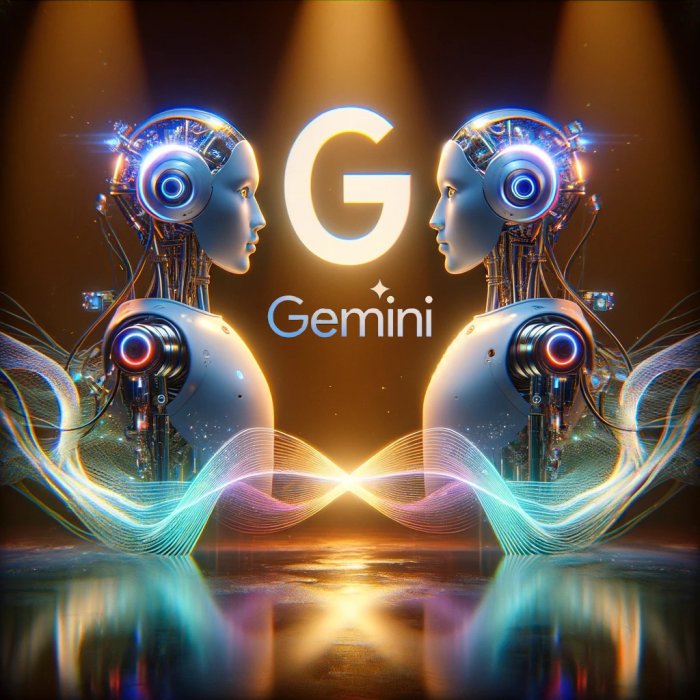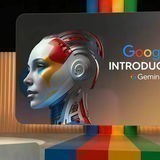 Hello friends, this is the "Artificial Intelligence" podcast.
Hello friends, this is the "Artificial Intelligence" podcast.
Today is December 9, 2023, and we will talk about two super hot news from the world of Information Technology and specifically our common theme of artificial intelligence.
Google GEMINI and Google GNoME - the two new AI models from Google
On December 7, 2023, Google officially announced the launch of two new artificial intelligence models, named GEMINI and GNoME.
Google GEMINI is a multimodal language model alternative to the well-known ChatGPT from OpenAI.
It can process text, images, audio, and video in the already familiar way.
On the other hand, Google GNoME is a model for researching and creating new materials and substances.
Wow! Sounds super cool, right! :)
https://www.youtube.com/watch?v=02Yi81efD0o
Everything would have been great if only a day after the conference where Gemini and Gnome were officially announced, the community was strongly disappointed with some blatant manipulations and outright lies by Google.
Blatant manipulations, especially in the presentation of Gemini.
But let's take things in order!
Is Google GEMINI a real alternative to ChatGPT?
Friends, on December 7, a significant, fundamental change definitely occurred.
Before December 7, in the world of Artificial Intelligence and especially Artificial Intelligence that is on its way to becoming AGI (Artificial General Intelligence), we had practically only ChatGPT.
All other alternatives were far, far behind in their development and capabilities.
What really happened on December 7, 2023, is that with the appearance of Google GEMINI, there is now a real alternative and competitor to ChatGPT.
Below in this podcast, I will specifically quote the data, characteristics, and results of the tests of the Artificial Intelligence GEMINI specifically announced by Google.
Here I would like to make an important note!
When reading all these results and comparisons in the tests of GEMINI, you should keep in mind that some of them were received with a huge dose of skepticism.
On one hand, some tests and comparisons were manipulated by Google to enhance the results of GEMINI in comparison to ChatGPT.
To achieve their goal, here and there Google tests, compares, and interprets the results of the two Artificial Intelligences in a way to make the results of GEMINI surpass those of GPT-4.
They do it by sometimes comparing apples to pears or apples to oranges... unfortunately, this slight manipulation here and there is a fact.
Currently, there is also NO real access to GEMINI Ultra, the most powerful version of AI that Google uses for comparison with ChatGPT-4.
According to the officially published results by them, GEMINI Ultra surpasses most of the benchmark results of GPT-4.
But the saddest thing in this case is not necessarily the comparison of pears with apples, but a demo video from which one initially gets a WOW impression of Gemini.
Later, however, it turned out that the most important moments of this demo are a complete lie and manipulation... It wasn’t a video at all, but they presented it to us as a video... to impress us better... ha ha ha :)
But let's still return to what we actually have at the moment and can test.
The most powerful GEMINI Ultra will be available sometime next year, but today at least we have completely free access to the lower version, GEMINI Pro.
GEMINI Pro is an alternative to ChatGPT 3.5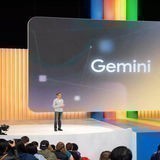
Currently, we can test and use GEMINI Pro through our well-known Google Bard.
Based on my individual tests of the new PaLM2 Google Bard and based on what I hear and read from other colleagues, I can definitely say that today Google Bard powered by GEMINI Pro is actually quite ABOVE the capabilities of ChatGPT 3.5.
And yes, GEMINI Pro is simultaneously below the level of ChatGPT-4.
Keeping in mind all the manipulations and exaggerations by Google, one exceptionally important fact is indeed true!
FINALLY, there is a real, working, and accessible alternative to ChatGPT!
Honestly, I don’t know exactly when Google officially included GEMINI Pro in Google Bard, but definitely some time BEFORE December 7th, I noticed that the level of responses and solutions to the tasks posed by Google Bard significantly increased.
ChatGPT-4 is the main AI model I use daily for various tasks in my work.
In recent months, many of the tasks I gave to it were also run in parallel on Google Bard and Bing Chat, and I compared the quality and depth of the responses.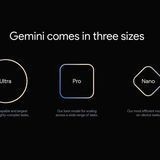
And yes, quite before December 7th, the level of Google Bard noticeably increased at one point!
Main Features and Capabilities of GEMINI
Below, I will briefly go over the main features and capabilities of Google GEMINI announced on December 7th.
Then I will focus on a few blatantly irritating aspects of Google's "lightly" powdered and manipulative presentation of information.
I understand that following that somewhat comical and slightly tragic public presentation of Google's Artificial Intelligence a few months ago, today Google really wants to show that they have finally achieved something truly significant.
Yes, I understand them very well!
After these important clarifications, it is high time to delve more deeply into the TOP news from December 7th.
Google GEMINI official presentation on December 7, 2023
I assume that all of you listening to this podcast have already read and heard quite a lot of materials and data about the new star in the sky, GEMINI. :)
That's why below I will summarize the presentation, and below it, I will delve into more detail about some irritating aspects of the tests and comparisons between GEMINI and ChatGPT.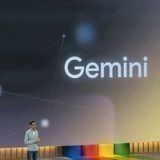
Specifically, the manipulative comparison by Google of apples to oranges. :)
Google Gemini artificial intelligence will be available in three models:
Gemini Ultra - this is the largest and most capable model of Google's Artificial Intelligence designed for work on highly complex tasks.
Gemini Ultra is de facto an alternative to ChatGPT-4.
Gemini Pro - this is the next model of Google's Artificial Intelligence and according to the presentation, it is intended for work on a wide range of tasks... whatever that means ;)
Gemini Pro is de facto an alternative to ChatGPT-3.5, but according to my personal tests, it is much better.
Currently, anyone can test Gemini Pro for free through the interface of the well-known Google Bard.
The smallest artificial intelligence model is called Gemini Nano.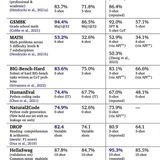
Gemini Nano is intended for Android users who want to develop applications powered by Gemini.
According to information from Google, for example, with Gemini Nano, people can now summarize recordings made with the Recorder application on the Pixel 8 Pro phone - for now, however, this works only in English.
Gemini operates on TPU tensor processors developed by Google
Something very important to keep in mind is the fact that the GEMINI artificial intelligence model currently operates on TPU processors developed by Google.
This is definitely something very important to consider.
A proprietary AI model using its own processor architecture developed for maximum optimization of AI work.
According to Amin Vahdat, Vice President of Cloud AI at Google, Gemini will be trained on both TPU and Nvidia graphics processors (GPU) in the future.
Let's not forget that Nvidia currently produces the GPU H100 - the most popular chip for powering artificial intelligence.
According to information, Google Bard will be integrated with Gemini Ultra next year.
In the coming months, Google plans to add Gemini to other applications, including its search engine, Google Ads, and the Chrome browser.
Benchmark Tests and Comparisons of Gemini with ChatGPT
Undoubtedly, Google released Gemini to compete with OpenAI's GPT models.
At the press conference on December 7th, Sissie Hsiao, Vice President of Google's chatbot, known as Google Bard, stated that Gemini Pro surpassed GPT-3.5 in six out of eight industry benchmarks used to measure results and the level of artificial intelligence models.
Gemini Ultra - Google's most advanced model - had beaten ChatGPT-4 in seven out of eight benchmarks.
The table of results and comparisons by Google shows Gemini Ultra defeating GPT-4 in most standard benchmarks.
However, in most comparisons, Gemini Ultra only beats GPT-4 by a few percent or less.
In other words, Google's best AI model has made only narrow improvements on something OpenAI finished work on at least a year ago.
Let's not forget the extremely important fact that Gemini Ultra is still NOT available for real testing and verification of these measurements.
Then there is the video demo below, which some analysts initially described on Twitter as "stunning".
But subsequently, things turned out to be quite different...
For all listeners of the podcast, I recommend visiting the "Artificial Intelligence" Podcast website where there is a link to the mentioned demo video:
"Hands-on with Gemini: Interacting with multimodal AI".
For all of you who, like me, are usually riding a bike or driving a car, or doing household chores while listening to the podcast, I will describe in a few words what exactly happens:
Hands-on with Gemini: Interacting with multimodal AI
The video was recorded by a Google engineer interacting with Gemini using a combination of voice commands and gestures.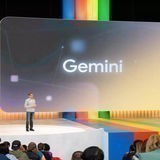
At the beginning of the video, the engineer asks Gemini which is faster: a picture of a car drawn with the edge shape of the body or a car with an aerodynamic shape.
Gemini correctly answers that the car with an aerodynamic shape will be faster because it has less resistance.
Then in the video, the engineer asks Gemini which is bigger: the Sun, Earth, or Saturn, showing him the three planets drawn on pieces of paper.
Gemini answers that the Sun is the largest, followed by Earth, and finally Saturn.
The video then shows a well-known game from our recent past: "Here it is, here it isn't".
A piece of paper crumpled into a ball is hidden under one of three cups.
The cups are then shuffled several times by the operator, and finally, Gemini guesses under which cup the crumpled paper ball is.
Here are some of the other elements demonstrated in this video:
Gemini can understand that by connecting dots with sequential numbering on a sheet, a crab image will appear.
Gemini sees this even before the lines and dots are connected.
Other demonstrated capabilities in the video: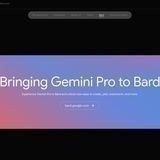
Answering questions: Gemini can answer questions from various fields, including physics, astronomy, and morality.
In the case of the question about the speed of cars, Gemini uses its knowledge of physics to give the correct answer.
Image recognition: Gemini can recognize images and extract information about them.
Logical thinking: In the case of the picture with dots and lines, Gemini can recognize that the picture is a crab, before the dots are connected and the picture is completed.
This shows that Gemini has the ability to reason and understand images.
Furthermore, Gemini demonstrates that it can generate various creative textual formats, such as poems, code, scripts, musical compositions, and more.
Analysis of the Gemini demo video presentation
So I assume everyone who has watched the said demo video is left with the impression that the engineer leading the clip communicates with Gemini via video and Gemini responds in real time?
Unfortunately, this is not true at all in practice!
Google admits that the video is edited and that the delay in responses is greatly reduced to improve the viewability of the demo ... hmm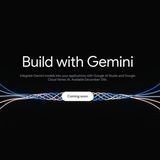
This means that the time required for each correct reaction was actually longer than what is shown to viewers in the video.
The next thing you understand MUCH later, if you delve into the topic and start investigating ...
If you delve into the details, you will find out that the whole video presentation of real-time video communication is an absolute LIE.
In fact, all the prompts shown in the demo as real-time video communication were communication based on static text and photo prompts.
Google also does not specify here another very important fact, that this video demonstration was actually made with the most powerful Gemini Ultra model.
Gemini Ultra, which let's not forget is still NOT available.
Overall, it turns out that the video is just some video animation directed by some people who want to make us believe in ... something.
The video demonstration, which is supposed to convince us that Gemini is a super powerful artificial intelligence model that changes the way we interact with it.
At first glance, yes, these are impressive things!
On the other hand, after one starts feeling stupid after realizing the truth about the animated movie that Google projected to them and he got hooked and believed ...
The manipulation in these important details clearly show Google's desperate attempt to achieve maximum broad marketing result at the cost of everything ...
On one hand, let's not forget that Google has one of the largest teams of Artificial Intelligence researchers.
They have access to much more data compared to anyone else. Yes, this is undoubtedly an important fact.
Apparently, people were pressed too hard from above to show some super unrealistic results to justify their salaries ...
In the blog post on Google you can read for yourself how exactly the said interactive demo video was made.
It becomes clear that everything that at first glance seems like dynamic communication in real time in fact are the well-known static text and photo prompts:
How it’s Made: Interacting with Gemini through multimodal prompting
There's just one more important thing I would like to draw your attention to regarding Google's marketing strategy to bring out the new GEMINI with higher results.
Even if we accept that everything shown by Google is true, let's not forget that ChatGPT-4 was released 9 months ago.
What I want to say outright is that I respect Google's marketing efforts, but in 9 months, OpenAI has most likely already made considerable progress...
Now, however, let's return to the overshadowed Google GNoME
After the above presentation of Google GEMINI - the new star in the sky of Artificial Intelligence, we must return to the greatly neglected Google GNoME amid the hype.
In my opinion, GNoME should be the star! GNoME is not to be underestimated!
Decoded, the acronym GNoME stands for Graph Networks for Materials Exploration.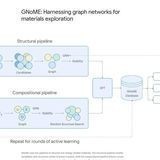
We first learned about Google GNoME on November 29, a week before its official presentation on December 7, from a publication on Google DeepMind - "Millions of new materials discovered with deep learning".
You can read the original study "Millions of new materials discovered with deep learning" on the Google DeepMind website or by clicking on the link here: "Millions of new materials discovered with deep learning"
A brief summary of this super interesting material from Google DeepMind with a detailed description of the capabilities of Google GNoME will be heard/read a little further down in today's news podcast.
I suppose you, like me, will ask yourself the question:
- Isn't Google GNoME just a narrowly specialized aspect of the super powerful artificial intelligence model GEMINI?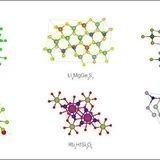
And the answer is:
No! At least according to the official information, Google GEMINI and Google GNoME are two completely separate artificial intelligence models from each other.
The current hot topic, Google GEMINI, is a multimodal language model that can simultaneously process text, images, audio, and video.
On the other hand, GNoME is a model solely for researching and creating new materials and substances.
So, let's return to decoding the meaning hidden behind the acronym in the name of the new artificial intelligence model.
GNoME stands for Graph Networks for Materials Exploration.
Graph networks are a type of artificial intelligence that uses graphs to represent data.
A graph is a mathematical structure consisting of nodes and links between them.
In the context of materials exploration, the nodes can represent atoms or molecules, and the links can represent bonds between them.
Materials science or otherwise known as the science of Material Exploration is a field that deals with studying the properties and behavior of materials.
It is used to develop new materials with desired properties, such as strength, corrosion resistance, or electrical conductivity.
Materials Science with the help of Graph Networks is a very promising approach to materials exploration, which uses networks to analyze data about materials.
This approach has tremendous potential to improve the efficiency and accuracy in researching and discovering new materials.
Yes, GNoME is definitely NOT to be underestimated!
Below is a very short summary of the article published in Google DeepMind dedicated to GNoME.
Google GNoME: Millions of New Materials Discovered with Deep Learning
From the team at Google DeepMind
On November 29, 2023, at the Neural Information Processing Systems (NeurIPS) conference in New Orleans, USA, we presented Graph Networks for Materials Exploration (GNoME), a new tool for researching and creating new materials and substances. GNoME has been trained on a huge database of chemical data, including molecular structures, substance properties, and reactions between substances.
GNoME successfully identified 2.2 million new materials, previously unknown to science. Of these materials, 380,000 are stable and have the potential to be used in various applications.
Some of the examples of new materials discovered by GNoME include:
52,000 new graphene-like materials, which have the potential to revolutionize electronics with the development of superconductors.
528 potential lithium ion conductors, which could be used to improve the performance of battery-powered devices.
Several new materials that have the potential to be used to improve the resistance of materials to corrosion and heat.
GNoME is a powerful tool that has the potential to revolutionize the way new materials are discovered. 
It can be used to accelerate the process of discovering new materials and to direct research towards materials with specific properties.
How Google GNoME Works
GNoME uses deep learning to identify new materials that are stable and have desired properties.
It does this by analyzing the structure of molecules and the properties of substances.
GNoME is trained on a database of over 100 trillion parameters.
This database includes data on over 100 million different materials.
GNoME works by first generating hypotheses about new materials.
Then it uses deep learning to evaluate the stability and properties of these hypotheses.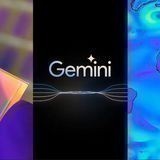
GNoME is still in development but has already shown that it has the potential to be a powerful tool for research and creation of new materials.
The Future of Google GNoME
GNoME has the potential to significantly impact various fields, including:
Energy: GNoME can be used to develop new materials for more efficient and sustainable energy sources.
Healthcare: GNoME can be used to develop new materials for more effective drugs and therapies.
Nanotechnology: GNoME can be used to develop new materials for smaller and more powerful electronic devices.
This is the end of the summary of the material from Google DeepMind presenting GNoME officially.
Conclusions and Brief Commentary on Google GNoME
It's clear that GNoME is still in development, but it's definitely already evident that GNoME has the potential to be a super powerful tool for research and creation of new materials.
GNoME is indeed a super powerful tool for research and creation of new strategic products and technologies.
FACT!
Let's not forget that GNoME was first officially presented on November 29 at the Neural Information Processing Systems (NeurIPS) conference.
More than a week before the well-prepared and super cool official presentation of GEMINI - Google's main player in the race with OpenAI.
I was definitely surprised by this fact and delved into information about this conference.
What is the real significance of the Neural Information Processing Systems - NeurIPS conference?
Why was GNoME actually presented there much earlier than its official presentation on December 7th?
What I subsequently learned is that the Neural Information Processing Systems (NeurIPS) conference is one of the most prestigious conferences in the field of artificial intelligence.
It is held every year and gathers scientists and engineers from all over the world to present their latest research.
Actually, presenting GNoME at NeurIPS is of particular importance to Google, as this is de facto the first public presentation of the model to professional circles mainly and only dealing with Artificial Intelligence.
This de facto gave the opportunity to the best scientists and engineers from the AI circles to get acquainted with GNoME and its capabilities.
On the one hand, this improves Google's somewhat fallen authority in these circles, and on the other hand, it helps to raise awareness of GNoME and to stimulate further research and development of the model.
How do you think this "stimulation of further research and development of the model" could actually happen?
Well, it is clear that through this very good advertising, Google will definitely fill its ranks of engineers and developers in this super interesting and promising topic much more easily and quickly.
Yes, of course, GNoME was presented at NeurIPS earlier than its official presentation on December 7th, because this is also a completely standard practice for presenting new research in the field of artificial intelligence at such a narrowly specialized conference with great authority, like NeurIPS.
Yes, this is definitely a great way to get feedback from other narrowly specialized scientists and engineers and subsequently improve the quality of research.
Here are some of the specific benefits of the early presentation of GNoME at NeurIPS
The new Google GNoME received widespread publicity and attention from the scientific community.
Its creators from Google DeepMind improved their authority and positions BEFORE presenting a week later the TOP weapon, Google's TOP competitor: GEMINI.
GNoME received the first assessments from external scientists and engineers.
This helped to assess the place of GNoME and to raise the authority of its creators in the field of artificial intelligence.
Conclusion
Friends, what do you think of the new models of Artificial Intelligence presented by Google on December 7th?
Do you, like me, take what happened super positively for the future of Artificial Intelligence?
Do you think that in Google GEMINI there is now a real alternative to ChatGPT?
What do you think about the manipulations by Google?
I am eagerly awaiting your comments under the podcast on Spotify, YouTube Podcast, and Audible!
If you're listening to the podcast on YouTube, please subscribe to the "Artificial Intelligence" podcast channel and hit the "Like" button!
This REALLY helps a lot with the podcast's visibility in YouTube's algorithm!
The effort in collecting and processing information for each podcast research with a length of 4-4500 words like today takes quite a bit of time and effort, so your support with a subscription and comment on YouTube and Spotify are highly valuable!
Thank you!
What do you think about how we will deal with the ethical, legal, and social issues that will inevitably arise with the advent of artificial intelligence?
How will all this affect our humanity and creativity?
These are just some of the questions I will explore in the upcoming episodes of the “Artificial Intelligence” podcast.
If you have an opinion, idea, or question on the topic, feel free to write to us at our email address or leave us a comment on Facebook.
Thank you for the time you spent today listening to this podcast episode from the "Artificial Intelligence" series.
I am Lupo, and I wish you Good Luck!
And keep it fun!
Sources
Millions of new materials discovered with deep learning
Google DeepMind at NeurIPS 2023
Google’s Gemini Looks Remarkable, But It’s Still Behind OpenAI
What is Google Gemini? How to use it? Features and Limitations
How it’s Made: Interacting with Gemini through multimodal prompting
Google: Тензорните процесори превъзхождат обикновените чипове
